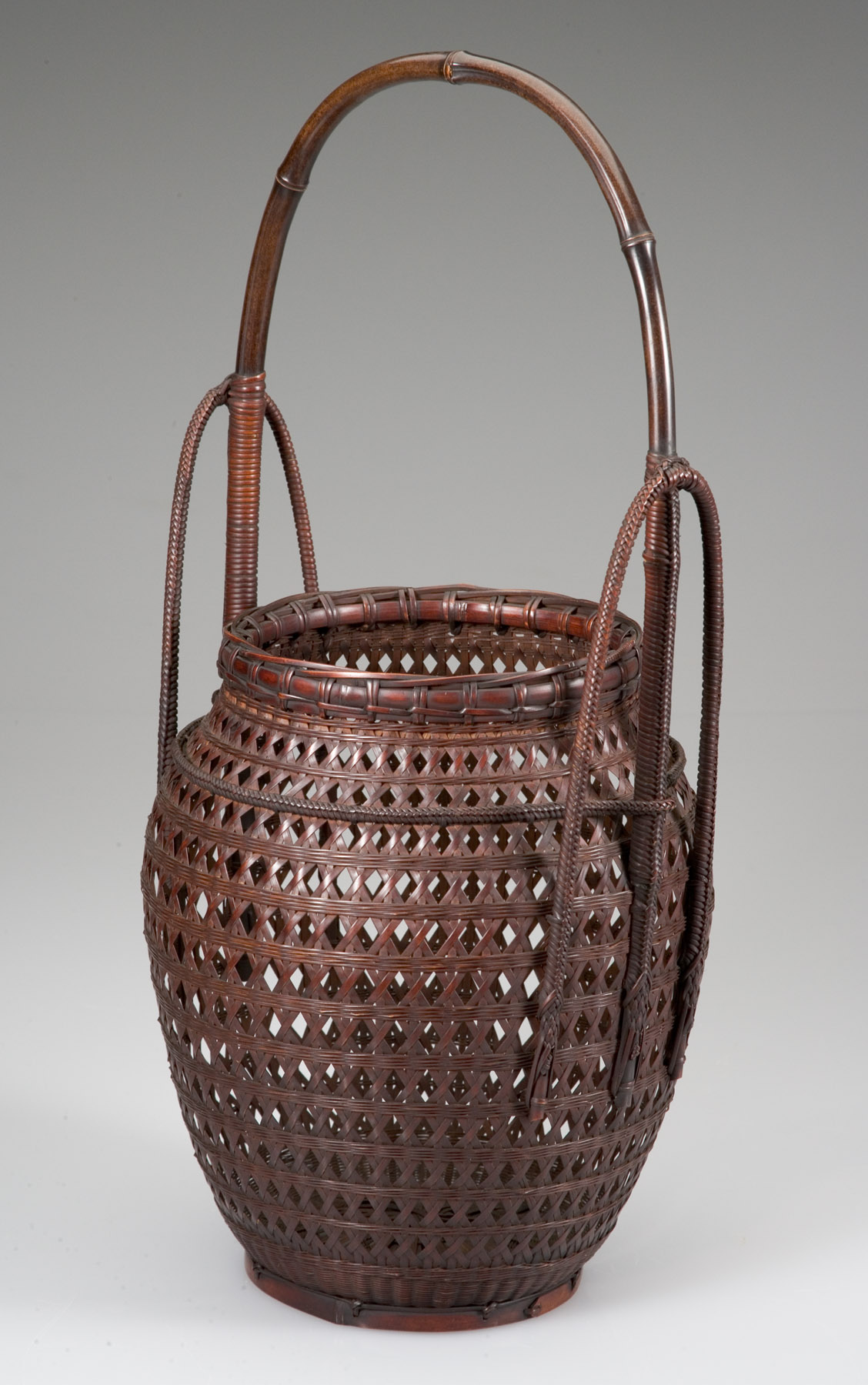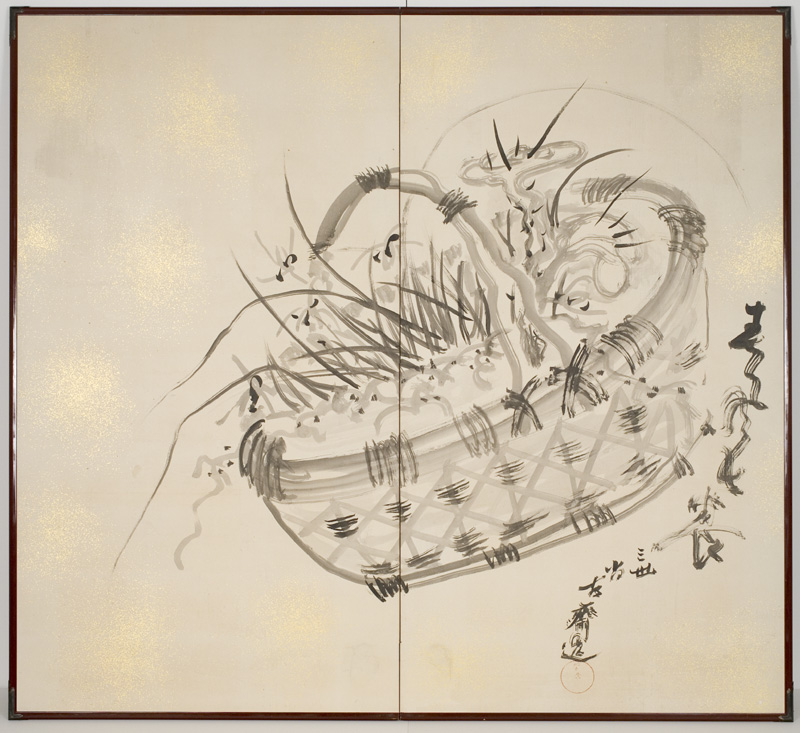August 19 - December 6, 2015
Japanese Gallery

Known primarily as a bamboo artist, Hayakawa Shōkosai III (1864-1922) was also an accomplished musician, ink painter, and calligrapher. His father, Shōkosai I, single-handedly elevated bamboo crafts to a modern, high art form through his technical perfection and artistic individuality. The elder Shōkosai was the first bamboo artist to sign his works and trained his sons in the many technical aspects of this extremely demanding art form. Bamboo artists execute every phase of the creative process, including selecting, cutting, and splitting the bamboo; finishing the strips; and plaiting and completing the basket. The Hayakawa family lineage of artists reached a fifth generation with Hayakawa Shōkosai V (1932-2011), designated a “Living National Treasure” by the government of Japan in 2003.
Beginning in the 1700s, Japanese demand for high quality baskets grew due to the rising popularity of sencha (steeped green tea). The traditional, ritualized chanoyu tea ceremony uses matcha (powdered tea) and restricts the use of flower baskets to the summer season. The sencha ceremony has fewer rules and uses flower baskets regardless of season. Initially, baskets for the sencha ceremony were imported from China or modeled after the finely-woven, long-handled Chinese prototypes. The basket on display exemplifies the Chinese style, but Shōkosai III also created baskets with a Japanese sensibility, such as the basket depicted on the screen here.
Above: Hayakawa Shōkosai III, Japanese, 1864-1922, Flower Basket with Cascading Handle, 1916; bamboo and rattan dyed with plum wood extract; Harriet B. Bancroft Fund, 2007.168


 Sign up for WAM eNews
Sign up for WAM eNews